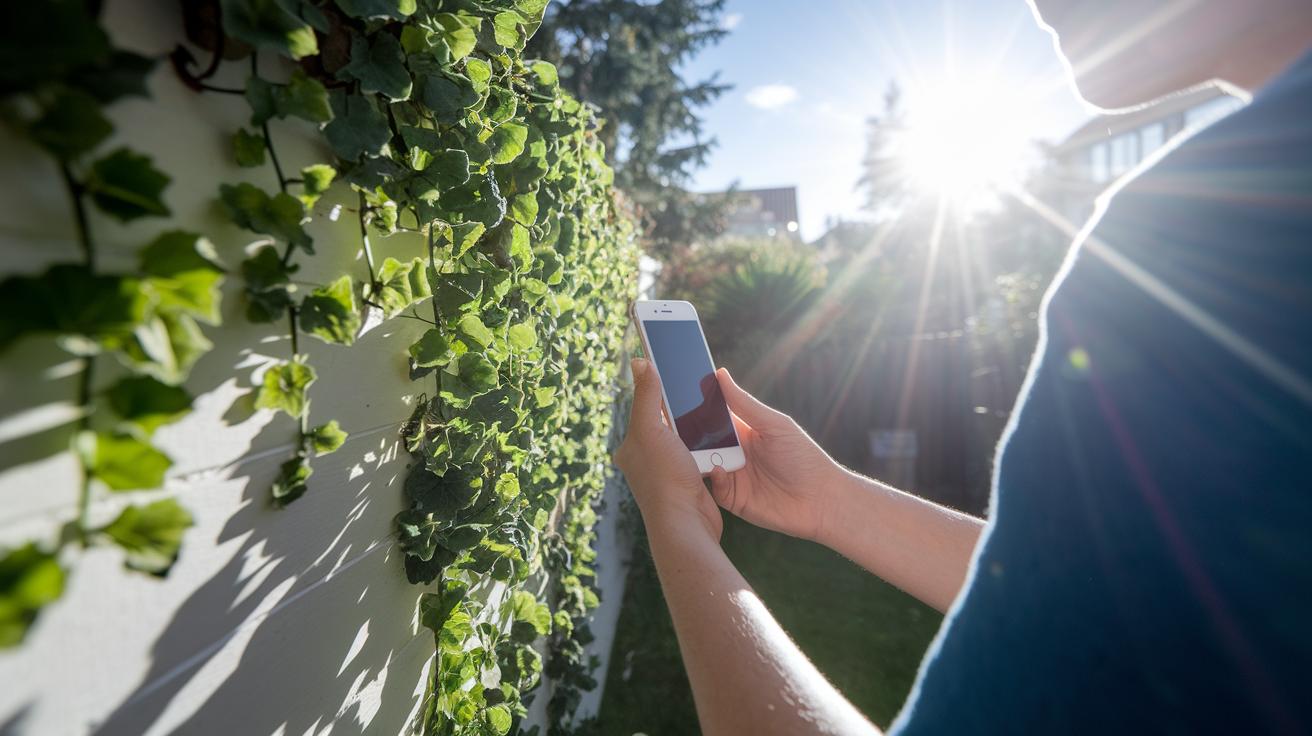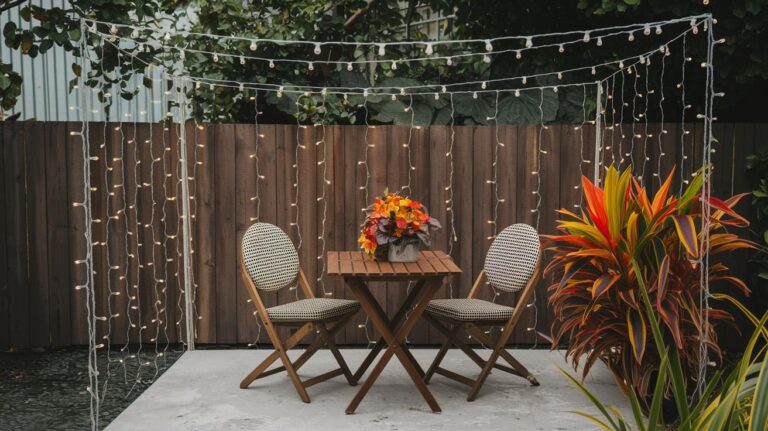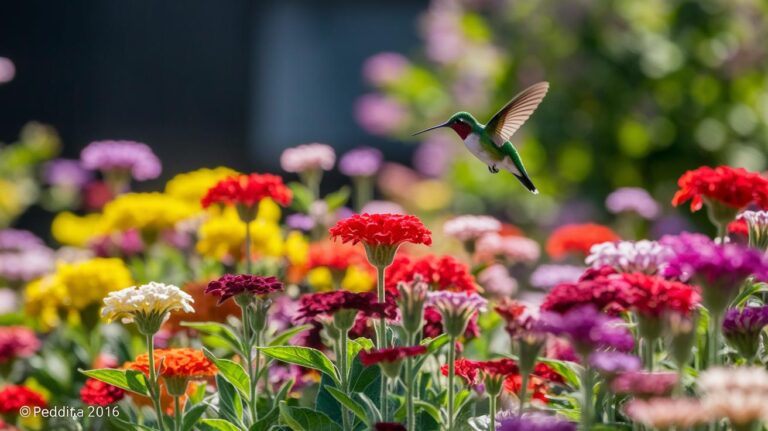How To Design A Living Wall For Outdoor Spaces Perfectly
Ever stare at your plain fence and wish it could turn green? Imagine a living wall (a vertical garden you hang) dripping with soft leaves, bright flowers, and that fresh-earth smell. It’s like giving your yard a mini jungle hug.
So, how do you build one? We’ll start with sturdy panels (solid boards that hold soil and plant pockets). Then we’ll slip in cozy pockets (fabric pouches that cradle roots) and set up a simple drip system (tiny tubes that keep plants watered) so your greenery stays happy.
You’ll get tips to handle sun, wind, and rain without fuss. And hey, I once overwatered my first wall, oops! But you’ll learn to find the right balance.
Planting time: feel the warm earth crumbling between your fingers as you tuck in each seedling and hear bees buzzing around lavender. Planting now sets you up for a summer harvest.
Ready to roll up your sleeves and watch your fence come alive?
Planning Your Outdoor Living Wall: A Concise Roadmap
Ever dreamed of a living canvas right on your house? A living wall turns your bare exterior into a vertical garden full of life. It’s all about picking materials that last through heat, gusty wind, and drippy rain. And of course, you want your plants to thrive and look amazing.
This step-by-step plan helps you choose sturdy panels, cozy pockets for roots (where they can spread and stay snug), and simple irrigation (a basic watering setup). Think of it like picking tools that keep your green wall happy and healthy.
First, size up your spot, note how much sun and shade you’ll get. Next, pick the frame or mounting system. Then choose plants that love your local climate. After that, set up a water system so your plant roots never dry out. Finally, sketch your layout and plan a quick care routine.
Whether you’re a pro designer or a weekend DIYer, this roadmap has your back. Ready to roll up your sleeves?
Let’s dive into the next sections for clear steps and my best insider tips on green wall planning.
Assessing Your Outdoor Space for Living Wall Placement

Thinking about a living wall? Let’s peek at your spot first. You’ll thank yourself later.
First up, Sunlight (how much sun you get). Do a sun exposure assessment (tracking daily sun hours). Note when your wall basks in full sun, part shade, or deep shade.
Next, Wind. Watch the prevailing wind patterns (common directions and strength). Strong gusts can bruise plants or wobble frames.
Orientation matters too. South-facing walls bake in hot sun. North walls stay cooler and gentler on ferns (plants with large, feathery leaves).
Then check Humidity (amount of water in the air) and temperature. Write down if it’s usually damp or dry so you know if you need to mist your plants.
Finally, look for Obstacles. Spot trees or gutters that cast shade, block airflow, or drip water onto your wall.
By matching these microclimate (local weather around plants) details with the right brackets, panels, and plant picks, like succulents (plants that store water) for sunny spots or leafy greens for shade, you’ll set up a living wall that truly thrives. And hey, my cat loves to nap in the cool shade under mine. Back to prepping your wall… you’ve got this!
Choosing Structure and Materials for Outdoor Green Wall Installation
Have you ever felt the weight of rain-soaked soil (the mix of decayed organic matter that feeds your plants) in your arms? It’s like lugging a heavy, damp sponge. Your vertical garden needs a real brawny frame to hold all that wet earth and thirsty greenery.
Those support brackets (metal pieces that hold up your planters) and vertical planters (tall plant containers) must handle the extra load when rain soaks in. Oops, I once forgot to check the load rating and my wall bowed under wet soil. Aim for a setup rated to bear at least 30 pounds per square foot once your vines and flowers fill in.
| Material | Load Capacity | Durability |
|---|---|---|
| Galvanized Steel Frame | 50+ lbs/sq ft | High, rust-resistant |
| Treated Wood Panel | 30–50 lbs/sq ft | Moderate, natural finish |
| Modular Panel System | 20–40 lbs/sq ft | Varies, easy to swap out |
Match your choice to the wall substrate (the surface or material your wall is built on). If you’re anchoring a steel frame into studs (wood supports inside walls) or masonry (brick or stone), use heavy-duty bolts that won’t budge.
For treated wood panels on softer siding, slip a few extra metal brackets underneath. Modular living wall panels snap on fast, but if your wall feels fragile, tack on a backing board (solid board for extra support) behind them. That way your garden stays put when the next summer storm rolls in.
Selecting Plants: Best Choices and Seasonal Considerations for Outdoor Living Walls

Picking plants that love each spot on your wall makes a world of difference. Have you noticed how long your wall basks in sun? Or does it hide under a maple tree’s green shade? These tiny weather zones set you up for a lush, low-maintenance garden.
Those hot, bright areas call for succulents (plants with thick leaves that store water). They hold moisture in plump stems. And the cooler, damper sides? They’re perfect for ferns (plants with feathery leaves) and trailing vines (climbing plants that spread lightly). Oops, spilled a bit of potting mix there.
I also like adding edible herbs like lemon thyme (sun-loving herb with a citrusy scent) or mint (fresh, aromatic leaves). They bring tasty snacks right to your fingertips. Using native perennials (plants that return each spring) helps save water and draws in bees and butterflies.
| Plant | Why It Works |
|---|---|
| Sedum spp. | Plump succulent for full-sun spots |
| Asparagus fern | Airy fronds made for cool, shady corners |
| Plectranthus | Variegated trailing leaves for partial shade |
| Lemon thyme | Herb with bright citrus scent |
| Native geranium | Local perennial with colorful blooms |
| Hosta | Shade-loving foliage plant that thrives in humidity |
Here’s a fun trick. Rotate plants with the seasons. Tuck tiny daffodils in spring (bulbs with cheerful, sunny blooms) and swap in sun lovers like herbs by mid-summer. Let colorful sedum (drought-tolerant succulent) shine in fall and pop in hardy evergreens before winter’s chill.
Integrating Irrigation Systems into Your Outdoor Living Wall Design
Plants on a vertical wall need a steady drink, not a flood or a dry spell. If they get too much water, roots can rot. Too little, and leaves start to droop. Keeping moisture even makes the leaves perk right up and keeps roots smiling.
Imagine this. You stroll out each morning and feel the warm earth crumbling between your fingers. But you don’t want to wrestle with a hose every day, right? A simple, well-planned drip system can water your wall on its own. It saves your back and keeps your plants happy all season.
Here are a few friendly ways to set it up.
• Basic drip line tubing (a bendy tube with tiny holes) puts water right at each plant’s roots (where they drink). It’s the easiest drip installation.
• Timer-controlled drip ties your system to a little clock so your wall drinks on schedule. Set it once and forget it.
• Rainwater-fed drip uses gutters or barrels to catch rain. Then it funnels that fresh rainwater into your plants, cutting down on tap water use.
• Sensor-controlled drip adds soil moisture sensors (gadgets that check how damp the dirt is). If pockets are still wet, it pauses watering to stop overwatering.
Size it right. Plan for about 0.5 to 1 gallon per square foot of wall each week. That way every plant pocket gets just the right sip. Oops, check your pockets after a heavy rain, since sometimes they fill up more than you want. Then sit back and enjoy your leafy masterpiece.
Here’s the trick. Once it’s humming along, you’ll spend more time smiling at your green wall than wrestling with sprinklers.
Crafting Aesthetic Layouts for Your Outdoor Living Wall

A vertical garden (plants growing up a wall) feels alive when you mix leaf shapes and colors. Put broad, glossy leaves next to fine, feathery fronds so you can see and feel the contrast. I like using modular panels (pre-made wall sections for plants) to keep each soil pocket neat. Then group emerald greens, silvery-variegated leaves, and pops of coral blossoms in tight clusters. That simple pattern gives your wall a natural rhythm and makes your eyes wander over every inch.
And grouping by height zones adds depth. Place tall, spiky Dracaena up top where they catch the sun. Tuck lemon thyme or oregano (fragrant herbs) in the middle for that fresh scent when you brush past. Let trailing vines like ivy or creeping Jenny spill over the bottom ledge. Arrange these in horizontal or diagonal bands so each strip feels like a brushstroke in living art.
When dusk falls, lighting brings the whole display to life. Slide weather-proof LED grow-light strips (light-emitting diodes that feed plants light) between panel frames for a soft backlight. Add a few spot LEDs (small, focused lights) to highlight your favorite leaf shapes. Suddenly your vertical garden glows long after sunset, and every plant has its moment in the moonlight.
Budgeting and Cost Estimates for Outdoor Living Wall Projects
Crunching the numbers keeps surprises at bay. Building a living wall means adding up costs for sturdy frames (the boards and metal bits that hold everything up), plant pockets (little pouches that carry soil and greenery), watering gear, and some good old-fashioned TLC (tender loving care).
Structural panels (flat boards that form the wall base) and mounting brackets (metal hooks that secure the panels) usually run between $50 and $150 per square foot. Light modular systems cost less, while steel frames tend to be pricier.
Each plant pocket adds about $5 to $20, depending on whether you pick thrifty succulents or showy ferns and fragrant herbs. And when you set up irrigation (a drip system with tubes, timers, and connectors), you’re looking at roughly $200 to $500.
You might want extras like moisture sensors (they tell you when soil is too dry), filters, or special delivery fees, which can nudge your total higher. Permit fees or weatherproofing needs – say a UV-resistant coating or a freeze-proof liner – could tack on a few more dollars per foot.
Plan for a small yearly budget for fertilizer, swapping out plants, and system check-ups so your green wall stays happy. By having these figures in hand, you can map out what you need without nasty surprises.
Also remember shipping heavy steel frames adds freight fees, but lighter wood panels might come by standard delivery. Shopping in the off-season or buying in bulk can shave a chunk off that bill!
Putting it together yourself can save on labor, but bringing in green wall pros means less sweat and more peace of mind.
| Item | Cost Range |
|---|---|
| Frames & panels (structural parts) | $50 – $150 per sq ft |
| Plant pockets (soil pouches) | $5 – $20 each |
| Irrigation setup (drip system) | $200 – $500 total |
| Annual upkeep | Small yearly budget for fertilizer & replacements |
Maintaining and Troubleshooting Your Outdoor Living Wall

Keep your living wall happy with just a few minutes each week. Grab your pruners (handheld shears for cutting stems) and do a quick check. You might spot a droopy leaf or a sneaky weed stealing water from its neighbors. There’s a simple joy in brushing crumbly soil off the ledge and hearing a soft drip click to life.
• Prune away overgrown stems every six to eight weeks. This shapes your plants. It also removes dead bits and helps new leaves burst forth.
• Feed your wall on the same schedule with a balanced nutrient blend (equal parts nitrogen for leafy growth. Phosphorus for strong roots. Potassium for overall health). This keeps roots happy.
• Check the drip tubes and connectors for kinks or tiny clogs. Run your finger along the tubes. Clear any blockages so each pocket gets a good drink.
• Pull out plants that look wilted, sunburned, or stunted. Then pop in fresh little ones that match your wall’s light.
• Look over leaves and stems for tiny pests like aphids or caterpillars. Give them a gentle rinse or spritz with a mild organic spray to shoo away critters.
By the way, I once forgot to clear a clog – my wall sounded like a leaky faucet! Oops, almost forgot that one.
Jot these tasks into a seasonal calendar so you know when to prune, feed, and inspect.
Outdoor Living Wall Inspiration: Examples and Creative Ideas
Looking for ways to bring more green to your backyard? Picture a tall screen of local wildflowers (young plants you pop right into soil) that barely needs extra water. Or join a neighborhood workshop where everyone laughs while filling old wooden pallets (flat boards for stacking) with tiny herbs and trailing vines. Some walls turn patios into cozy nooks scented with lemon thyme and mint. Others become community projects that muffle noise with thick plant layers and bring folks together. And each idea does double duty, your wall not only looks great but also boosts plant health, adds privacy, or gives you fresh snacks.
• Native species screen planted with local grasses, sedums (low-growing succulent plants that store water), and wildflower plugs (baby blooms) to save water and feed pollinators (bees and butterflies).
• Patio herb wall featuring pouches of basil, rosemary, and herb wall garden , fresh kitchen picks just steps away.
• Pallet-based vertical gardens built in workshop meet-ups where friends repurpose wood, share tools, and swap tips on planting.
• Mixed-texture green screen combining tall ferns, spiky grasses, and trailing succulents (fleshy, water-storing plants) to soften fence lines, muffle street sounds, and add privacy.
Pick one of these living wall ideas or mix and match them to fit your space. Adapt the examples to your outdoor corner and watch your wall become a living piece of art.
Final Words
in the action of planning your outdoor living wall, we started by defining it and its goals of durability, plant performance and eye-catching style.
You worked through site assessment, structure choice, plant selection, irrigation setup, layout planning and maintenance strategy to build a solid roadmap.
Now you’ve got the basics for logging sunlight, picking sturdy frames, choosing the right greenery, installing drip lines and crafting a pleasing pattern.
Roll up your sleeves and transform bare walls into lush retreats, you’ve got all you need to know about how to design a living wall for outdoor spaces.
FAQ
What is an outdoor living wall and its main design objective?
An outdoor living wall is a vertical planting system that brings nature to a wall. Its main objective is to blend lasting structure, healthy plant growth and an eye-pleasing display.
What stages does green wall planning include?
Green wall planning moves through site assessment, frame choice, plant selection, irrigation setup, layout planning and maintenance strategy to guide each step and help build a strong, thriving green surface.
How do I assess my outdoor space for living wall placement?
Assessing space means tracking sun hours, wind patterns, wall orientation, humidity and nearby shade sources. These notes help you pick plants and materials that match your specific conditions.
What structure options support an outdoor green wall?
Structure options include galvanized steel frames (high strength, rust proof), treated wood panels (natural look, moderate load) or modular panels (snap-in planters for easy install and swap).
Which plants work best for outdoor living walls?
Ideal choices match wall conditions: succulents for sunny dry spots, ferns for shaded humid areas, edible herbs and native perennials that lower care demands and add seasonal interest.
How do I integrate irrigation into an outdoor living wall?
Integrating irrigation uses drip lines with timers for steady moisture. You can tap rainwater, add moisture sensors to cut overwatering and size the setup for your wall’s square footage.
What layout ideas boost the appearance of a living wall?
Layout ideas mix leaf shapes and heights in zones, alternate color swatches and use weather-safe LED lights to highlight key areas after dusk, keeping your wall lively day and night.
How much does an outdoor living wall project cost?
A living wall can run $50–150 per square foot for structure, $5–20 per plant, and $200–500 for irrigation kits. DIY cuts labor costs while hiring pros adds specialist fees.
What maintenance does an outdoor living wall require?
Maintenance needs pruning and trimming every 6–8 weeks, balanced feeding on the same schedule, line checks for clogs, swapping out weak plants and watching for pests to keep walls healthy.
Where can I find creative ideas for outdoor living walls?
Creative ideas include native plant screens for water savings, patio herb walls, pallet-based community gardens and mixed-texture green screens that boost privacy and lower noise.







